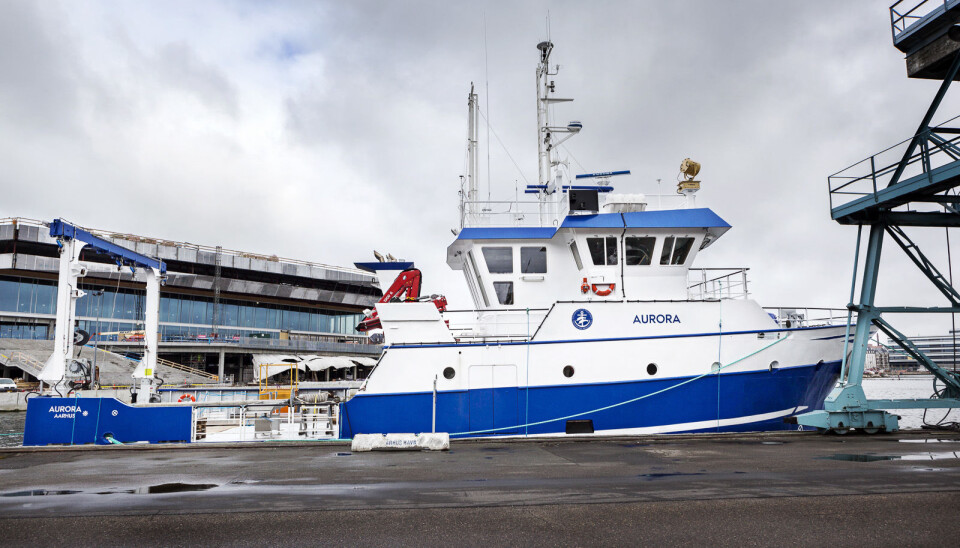
Denmark's new research ship is a maritime marvel
Denmark's new research ship is called Aurora. It boasts the newest technology and is quiet as a dishwasher.
"I wish fair winds for you. May luck and good fortune follow you and your crew. I name you Aurora."
With these words from Danish Minister of the Environment Kirsten Brosbøl (Social Democrats), a bottle of champagne and a triple gun salute, Aarhus University's new research vessel was launched on April 23, 2014.
Thirty years have passed since a dedicated research ship was built in Denmark. Aurora is quite different from any previous vessels as it can house many researchers on board and can carry the research equipment of biologists, geologists and others interested in the oceans' depths.
Click here to see photos and videos of Aurora (article in Danish)
"Ocean research will be even more important in the future as mankind's impact on the Earth and the need for the resources in the seas will increase further," says Niels Christian Nielsen, dean of Science and Technology at Aarhus University. "If Denmark is to continue to maintain a high standard in ocean research, it’s vital that Danish ocean researchers have access to modern and well-equipped research vessels."
Researchers are highly enthusiastic about Aurora because it can carry all the latest ocean research technology.
"With the equipment we have on board, this ship would be able to find an iPad if you lost it and it sank vertically to the sea bed," says Peter Grønkjær, chair of the research vessel group and associate professor at the Department of Bioscience - Arctic Research Centre at Aarhus University.
Silent as a dishwasher
Aurora has several computer screens on which researchers can monitor the seabed. Here they can see the soil layers that make up the seabed, find iPads if necessary and take water and soil samples.
Anyone who has sailed on ship knows that they are not the quietest machines in the world, and it can often be difficult to hear things if you are standing on the deck. But unlike most other ships, Aurora is silent.
"Try to listen”, says Grønkjær. ”The ship is like a dishwasher - it's not making a noise.”
That Aurora is virtually noiseless is quite deliberate, but it was also a difficult job, Grønkjær explains.
"Among other initiatives we had to import special propellers from the US Navy - they make less noise," he says. "This means we can get some better research results as noise from the ship doesn't destroy any samples or recordings. At the same time, the crew can concentrate on their research as they're not disturbed by noise from the ship."
He also demonstrates the sleeping cubicles while the ship's motor is running - but it is only the motion of the waves that reveals that we're on board a ship.
Aurora offers superior flexibility
Since its conception on a piece of paper, the almost silent, high-tech vessel was designed to have a special quality: flexibility.
"Flexibility is the ship's smartest aspect," says Grønkjær. "It can sail as a biology vessel one day, and become a geology ship the next. No research equipment is fitted permanently to the vessel."
Aurora is the newest of a series of Danish research vessels, of which DANA - built 33 years ago - is the most recent. Aurora's calendar is already well booked, and it will be in Copenhagen on 21-26 June 2014 for the Euroscience Open Forum (ESOF) and the 'Science in the City' science festival.
------------
Read the full story in Danish at Videnskab.dk











